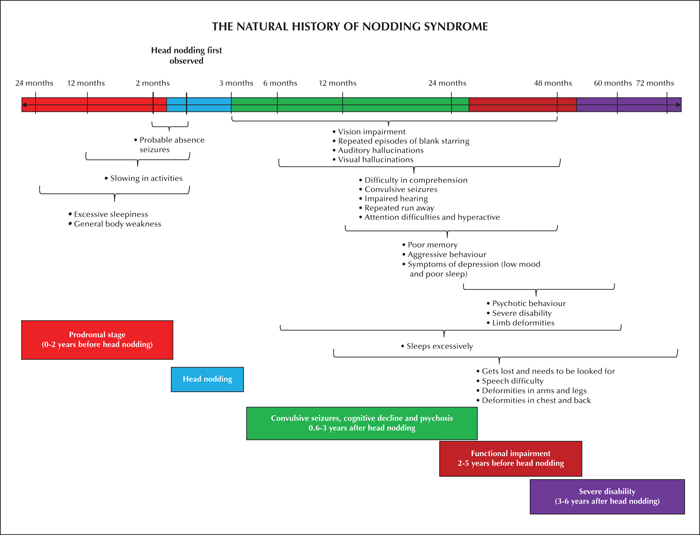Epileptic Disorders
MENUThe natural history of nodding syndrome Volume 20, numéro 6, December 2018
Auteurs
1 Makerere University College of Health Sciences, Uganda
2 Centre for Tropical Neuroscience, Kitgum Site, Uganda
3 Nuffield Department of Medicine, University of Oxford, UK
4 Busitema University, Uganda
5 Gulu Regional Referral hospital, Uganda
6 Ministry of Health, Headquarters, Uganda
* Correspondence: Richard Idro
Makerere University College of Health Sciences,
P.O Box 7072, Kampala, Uganda
- Mots-clés : head nodding, neuro-inflammation, head drops, atonic seizures, Onchocerca volvulus
- DOI : 10.1684/epd.2018.1012
- Page(s) : 508-16
- Année de parution : 2018

This work is licensed under a Creative Commons Attribution-ShareAlike 4.0 International License
Aims
Nodding syndrome is a poorly understood acquired disorder affecting children in sub-Saharan Africa. The aetiology and pathogenesis are unknown, and no specific treatment is available. Affected children have a distinctive feature (repeated clusters of head nodding) and progressively develop many other features. In an earlier pilot study, we proposed a five-level clinical staging system. The present study aimed to describe the early features and natural history of nodding syndrome and refine the proposed clinical stages.


